Queen Victoria's Coronation Ring 1838
Gold, sapphire, rubies, diamonds, silver | 2.0 cm (whole object) | RCIN 31722
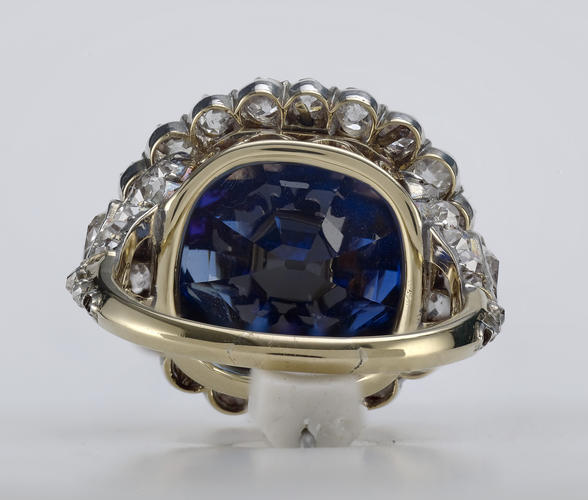
Rundell Bridge & Rundell
Queen Victoria's Coronation Ring 1838
Royal Collection Trust/© Her Majesty Queen Eilizabeth II 2022
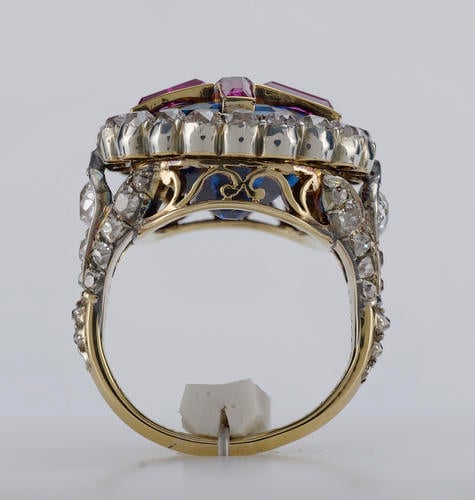
Rundell Bridge & Rundell
Queen Victoria's Coronation Ring 1838
Royal Collection Trust/© Her Majesty Queen Eilizabeth II 2022
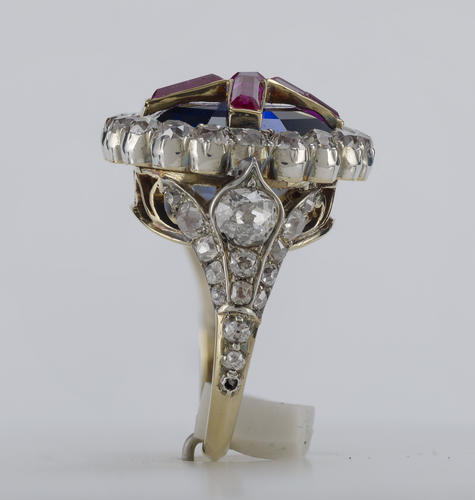
Rundell Bridge & Rundell
Queen Victoria's Coronation Ring 1838
Royal Collection Trust/© Her Majesty Queen Eilizabeth II 2022

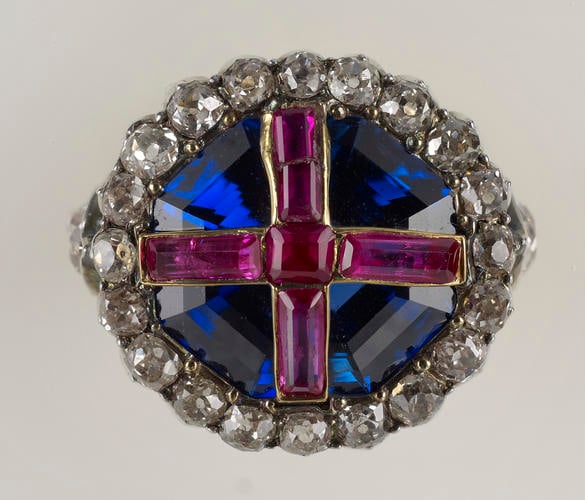
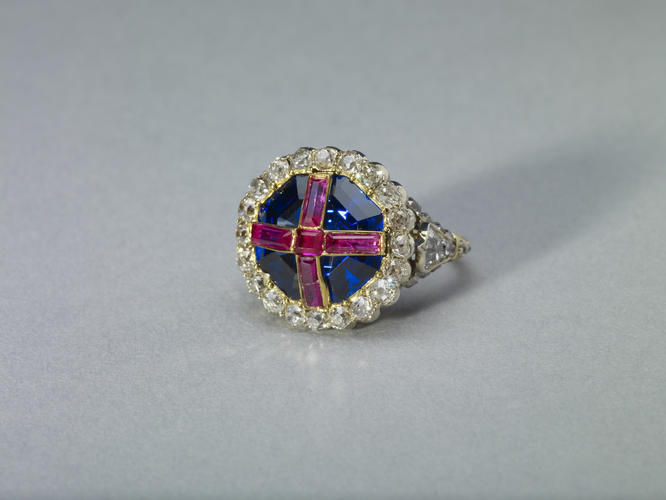



-
The ring comprises an octagonal step-cut sapphire, open-set in gold, overlaid with four oblong and one square rubies in gold strips forming a cross, within a border of twenty cushion-shaped brilliants in transparent silver collets. Brilliants decorate the shank and band.
During the coronation ceremony the ring is placed on the fourth finger of the sovereign by the archbishop, as a symbol of 'kingly dignity'. Since the thirteenth century it was traditional to include a ruby as the principal stone in the ring. The presentation of the ring forms part of the investiture of the coronation, which is preceded by the anointing with holy oil, and is followed by the crowning itself.
This ring was made for the coronation of Queen Victoria in 1838 and was inspired by the ring made for her uncle, William IV, in 1831. Misunderstanding the traditional wording of the rubric for the coronation, the royal goldsmiths, Rundell, Bridge & Rundell, made the ring for the wrong finger of the Queen - thinking it should go on the little finger, not the ring finger. Unfortunately the Archbishop forced it on her ring finger and Queen Victoria had to soak her hand in iced water after the ceremony. She later wrote in her Journal 'I had the greatest difficulty to take it off again, - which I at last did with great pain'. Nevertheless she had the ring inscribed after the ceremony 'Queen Victoria's Coronation Ring 1838'.
Like all coronation rings until the twentieth century, each monarch had a newly-made ring which was not kept with the regalia but with the personal jewellery of the sovereign. Queen Victoria decided to leave her coronation ring to the Crown, together with the rings of William IV and Queen Adelaide, and all three were deposited in the Tower of London, with the other Crown Jewels, by King George V in March 1919.Provenance
Supplied to Queen Victoria for her coronation in Westminster Abbey, 28 June 1838.
-
Creator(s)
(jeweller)Acquirer(s)
-
Medium and techniques
Gold, sapphire, rubies, diamonds, silver
Measurements
2.0 cm (whole object)
8.55 g (Weight) (whole object)







